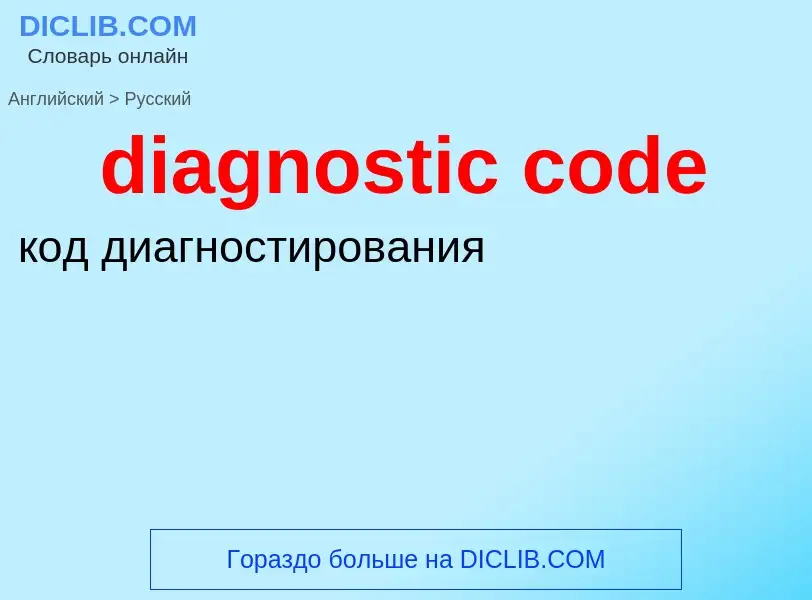Перевод и анализ слов искусственным интеллектом ChatGPT
На этой странице Вы можете получить подробный анализ слова или словосочетания, произведенный с помощью лучшей на сегодняшний день технологии искусственного интеллекта:
- как употребляется слово
- частота употребления
- используется оно чаще в устной или письменной речи
- варианты перевода слова
- примеры употребления (несколько фраз с переводом)
- этимология
diagnostic code - перевод на русский
медицина
диагностическое средство
медицина
клинический диагноз
2) код; шифр, индекс || кодировать; шифровать
- codes of fair competition
- activity code
- alphanumeric code
- census product code
- correcting code
- depreciation code
- enumerator code
- Federal supply code for manufactures
- input code
- item name code
- labor code
- machine code
- minimum list heading code
- occupation code
- operation code
- output code
- payroll size code
- project code
- safety code
- standard code
- Uniform commercial code
- United Nations code
- vendor code
Определение
Википедия
In health care, diagnosis codes are used as a tool to group and identify diseases, disorders, symptoms, poisonings, adverse effects of drugs and chemicals, injuries and other reasons for patient encounters. Diagnostic coding is the translation of written descriptions of diseases, illnesses and injuries into codes from a particular classification. In medical classification, diagnosis codes are used as part of the clinical coding process alongside intervention codes. Both diagnosis and intervention codes are assigned by a health professional trained in medical classification such as a clinical coder or Health Information Manager.
Several diagnosis classification systems have been implemented to various degrees of success across the world. The various classifications have a focus towards a particular patient encounter type such as emergency, inpatient, outpatient, mental health as well as surgical care. The International Statistical Classification of Diseases and Related Health Problems (ICD) is one of the most widely used classification systems for diagnosis coding as it allows comparability and use of mortality and morbidity data.
As the knowledge of health and medical advances arise, the diagnostic codes are generally revised and updated to match the most up to date current body of knowledge in the field of health. The codes may be quite frequently revised as new knowledge is attained. DSM (see below) changes some of its coding to correspond to the codes in ICD. In 2005, for example, DSM changed the diagnostic codes for circadian rhythm sleep disorders from the 307-group to the 327-group; the new codes reflect the moving of these disorders from the Mental Disorders section to the Neurological section in the ICD


![A portion of the "[[Zimmermann Telegram]]" as decrypted by [[British Naval Intelligence]] codebreakers. The word ''Arizona'' was not in the German codebook and had therefore to be split into phonetic syllables. A portion of the "[[Zimmermann Telegram]]" as decrypted by [[British Naval Intelligence]] codebreakers. The word ''Arizona'' was not in the German codebook and had therefore to be split into phonetic syllables.](https://commons.wikimedia.org/wiki/Special:FilePath/Ztel2.jpg?width=200)

![An example of a medical algorithm for assessment and treatment of [[overweight]] and [[obesity]]. An example of a medical algorithm for assessment and treatment of [[overweight]] and [[obesity]].](https://commons.wikimedia.org/wiki/Special:FilePath/Assessment and treatment algorithm for overweight and obesity.png?width=200)
![The Napoleonic Code in the [[Historical Museum of the Palatinate]] in [[Speyer]] The Napoleonic Code in the [[Historical Museum of the Palatinate]] in [[Speyer]]](https://commons.wikimedia.org/wiki/Special:FilePath/Speyer (DerHexer) 2010-12-19 051.jpg?width=200)
